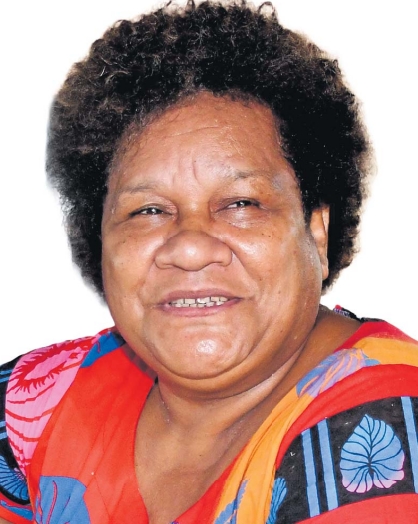IN a quiet corner of Nadonumai, where the soft strains of church hymns still drift through open windows on a Sunday morning, 54-year-old Tima Bui lives a life deeply shaped and redefined by music.
To be sure, it’s not just any music, but the sacred harmonies of gospel songs, the same ones that once soothed her troubled spirit and lifted her out of a life she now calls her “before”.
Tima’s journey with music began long before she even knew what a “note” was.
Born into a devout Methodist family, her earliest memories are rooted in the sound of her parents’ voices blending with others in the church choir.
“I was only three when I started singing,” Tima recalls with a smile.
“My parents used to take me along to their choir practices, and I would just sit there and listen.”
It wasn’t long before listening turned into humming, then singing, and eventually, understanding. Sunday School became more than just a routine.
It was where Tima learned her first notes, not from textbooks or trained instructors, but from the power of observation, repetition, and an almost spiritual connection to sound.
“I didn’t go to school to learn kabakaba (tonic solfa) or any formal music theory,” she shared.
“I just picked it up from being there.
“The choir masters would explain things, quarter beats, half beats, bars, and I’d learn by doing.”
Though she didn’t attend a music school, Tima’s high school years at Ballantine Memorial School gave her a bit more structure.
Music classes, included in the school curriculum, introduced her to the basics of solfa notation, but by then, she already had the foundations in place.
“It just made more sense when I got to high school because I had already been immersed in it.
“I go by what I hear.”
Her musical education, however, was not defined by institutions or degrees. It was deeply personal, emotional, and shaped by lived experiences.
That instinctive ear for harmony and rhythm led her to teach others, women’s groups, Sunday School children, and eventually entire choirs.
Her parents, both singers in the church choir at Nadonumai, were the earliest and strongest influences in her life.
Her father hails from Ketei, Totoya, and her mother from Yacata in Cakaudrove.
Their love for gospel music echoed in the family home, shaping not only Tima’s musical ear but also her understanding of faith and family.
Today, Tima serves as the Radini Tuirara — a position of leadership — and is a long-serving choir master at the Ratu Semesa Robarobalevu Methodist Church in Nadonumai.
But the path here wasn’t straight or simple.
Her voice may be steady now, but her past holds the kind of turbulence many would hesitate to admit.
“In Nadonumai, I was known as a drunkard, someone with a foul mouth,” she says candidly.
“But music changed me.”
It’s a powerful testimony, and one she doesn’t shy away from sharing.
According to her, there were days when she would find herself out late, drinking, swearing, wandering. But somewhere in the background, even in her most chaotic moments, the sound of hymns on the neighbour’s radio would stir something in her.
“I’d be out, and it would be a Sunday, and I’d hear a church song playing and I’d cry.”
Those tears weren’t for nothing. Slowly, the lyrics she once learned in Sunday School crept back into her heart.
She started singing again and found herself drawn back into the very space that first shaped her.
One song, in particular, stands out in her memory: Jisu Sa Lomani Au (Jesus Loves Me).
“That was the first song I remember singing,” she added. “I was really small, but I remember it clearly.
“I sing alto, but it’s the teaching that brings me so much joy.
“My favourite songs are the slow ones. I love teaching them. I love the way the words settle into people.”
At home, she shares that passion with her husband, who is also a choir master at their church.
His own music education was more formal; he studied under the respected Master Lai Veikoso at FIT.
Together, they now teach others, often sitting together to break down a song, its rhythm, bars, and harmonies, before introducing it to the choir.
“He’ll write down the solfa as he listens. Then we’ll sit down and work through it together.”
Though their methods differ, his technique, hers intuitive, their shared goal remains the same: using music to uplift, inspire, and heal.
“Sometimes, when I’m singing a song, and I can feel the words, I just cry.
“It’s the lyrics. They speak to me. They calm my soul.
“I no longer listen to secular music. Only gospel.
“That’s all I listen to. That’s all I need.”
The transformation in Tima’s life is not something that came overnight, and she is quick to remind others that change is possible, but it requires surrender, consistency, and often, a song.
In the softly lit halls of her church, her voice now leads others — the women, children, congregants, all in the same songs that once led her back to herself.
What began in the pews of Sunday School, among the hymns of her childhood, has come full circle.
Tima Bui’s voice is not only one of melody but of testimony, a living, singing reminder that music, especially in its most spiritual form, can heal even the deepest wounds.



